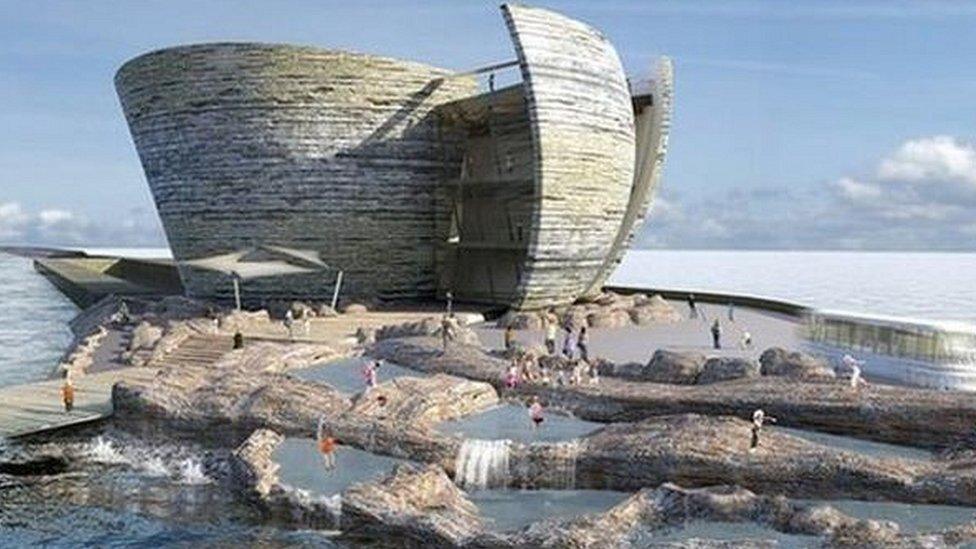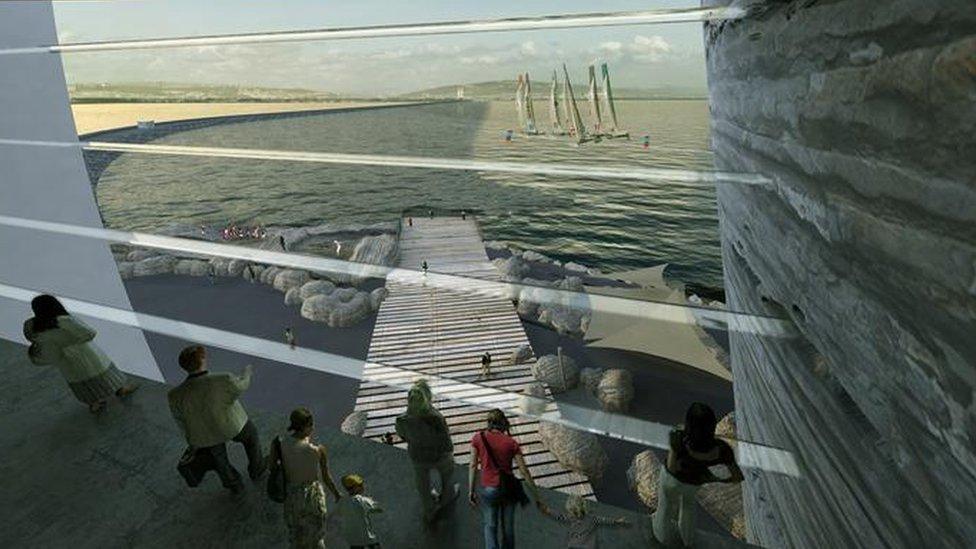£1bn Swansea Tidal Lagoon boss confident of long term deal
- Published

The company behind a £1bn tidal lagoon project for Swansea Bay believes it still has backing from within the UK government.
Tidal Lagoon Power has revealed to BBC Wales that on the same day as an independent review was ordered, it received a letter from a minister.
Chief executive Mark Shorrock said the cost could now be spread over 90 years rather than 35 years.
The UK government will not comment on the letter.
The Swansea lagoon would be the first of six around Britain's coastline, which it is claimed could generate 8% of the UK's electricity, with a life cycle of 120 years.
The company also hopes to develop lagoons at five other sites around the UK, including three in Wales.
Chief executive Mark Shorrock said there were positive noises from inside the UK government

Mr Shorrock told BBC Wales it had a "compelling" case and believes the review will show tidal energy makes sense for the UK.
On the day it was announced last week, he received a letter from Energy Secretary Amber Rudd, which he said showed the UK government was prepared to look at long term funding for the project and future lagoons.
He said he had given a lot of information to the UK government which would now be assessed independently, while it was entering the detailed elements of negotiating the electricity strike price.
"We love the review because it's going to find and validate that there's cheap power to be had from our home-grown power sources - our tides here in the Severn and Liverpool Bay," he said.
The review will report in the autumn.
Building work has already been delayed by a year after talks stalled over how much public money it would need.
The company had been calling for a decision on a guaranteed price for the energy it would produce to be made by next month.
But the review, starting this spring, will not give any answers before later in 2016 at the earliest.
Energy Minister Lord Bourne has said it would bring clarity.
"I want to better understand whether tidal lagoons can be cost effective, and what their impact on bills will be - both today and in the longer term," he said.

How would the lagoon work?
Watch Tidal Lagoon Power's video of how the turbines would work
A six-mile (10km) long seawall loops two miles (3km) out to sea from close to the mouth of the River Tawe and Swansea Docks, stretching close to Swansea University's new Fabian Way campus to the east.
It would house 16 underwater turbines generating electricity on both the rising and falling tide.
Enough renewable power would be produced for 155,000 homes (equivalent to 90% of Swansea Bay's annual domestic electricity use) for 120 years.
Source: Tidal Lagoon Power Ltd

- Published10 February 2016

- Published9 February 2016

- Published6 February 2016

- Published15 October 2015
